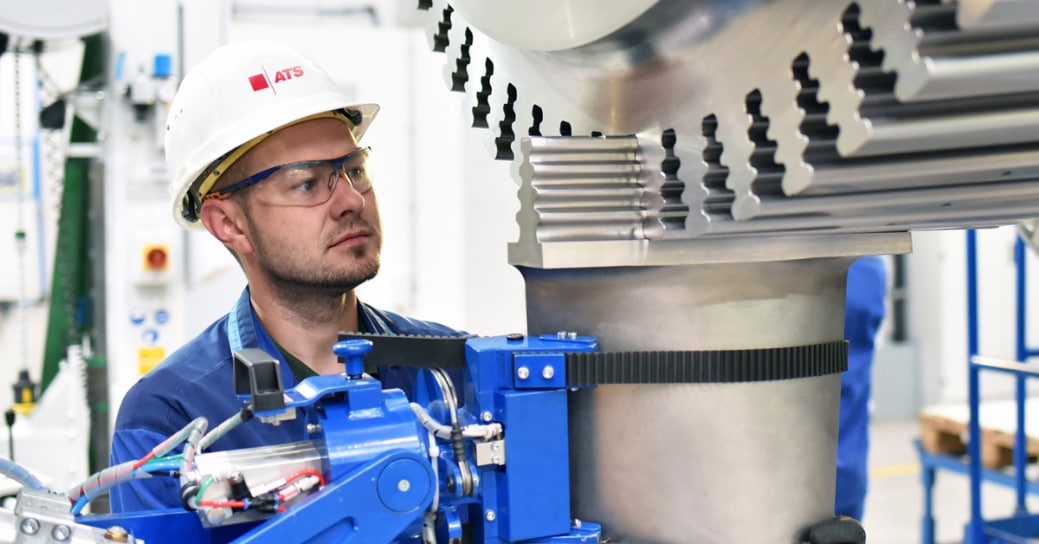If you’re a facility manager, you’re probably well aware of the crucial role preventive maintenance plays in your organization’s operations. However, quantifying its impact across the entire business sheds light on just how critical it truly is. According to Forbes, unplanned downtime costs manufacturing companies approximately $50 billion every year. Deloitte’s research further underlines the significance, suggesting that unplanned maintenance and associated downtime can reduce production capacity by up to 20%. In the world of asset and equipment maintenance, two fundamental categories come into play: corrective maintenance and preventive maintenance. Each category carries specific advantages and has a unique role to fulfill in your maintenance planning.
By determining the appropriate maintenance type for each situation, you can adeptly manage projects across your facility, ensuring that your maintenance priorities align harmoniously with your department’s overarching goals. With a well-crafted maintenance strategy, you can enhance processes, elevate production levels, and maintain financial prudence.
What is Corrective Maintenance?
Corrective maintenance falls within the maintenance tasks that address and rectify faulty systems and equipment. Its core purpose lies in restoring systems that have succumbed to breakdowns. You might encounter it under various aliases such as breakdown maintenance or reactive maintenance.
When is Corrective Maintenance Needed?
- Planned Maintenance Occasions: Corrective maintenance steps when planned maintenance efforts detect issues during scheduled inspections.
- Alerts from Preventive Maintenance: It enters the scene when preventive maintenance activities flag potential faults.
- Condition-Based Monitoring Discoveries: Corrective maintenance is activated upon identification of machine anomalies via condition-based monitoring, indicating potential failures.
- Non-Critical Asset Scenarios: In cases where non-critical assets can be allowed to run to failure and are economical and easy to repair or replace.
- Non-Safety-Critical Failures: When asset failure poses no safety threat.
- Redundancy-Assured Systems: Corrective maintenance becomes relevant when systems possess redundancies, ensuring continued functionality even in the event of part failures.
Importance of Corrective Maintenance
Both preventive and corrective maintenance stand as indispensable components for the seamless functioning of your facility. Preventive maintenance often aids in identifying potential issues before they escalate, while corrective maintenance tackles both minor glitches and major disasters.
In the world of facility management, all maintenance tasks carry pivotal significance for overall success. Downtime and safety concerns have a cascading impact across an organization, leading to augmented labor costs, shipment delays, order cancellations, and escalated product expenses. For instance, when a critical production line component fails, it triggers repercussions up and down the production chain, spiraling into a cascade of negative consequences.
Managing a maintenance program, irrespective of the facility’s size, presents a challenging and multifaceted role. As a maintenance manager, you shoulder the immense responsibility of ensuring the seamless operation of all assets and equipment within your organization.
Incorporating a computerized maintenance management system (CMMS) into your arsenal can substantially ease your workload. It centralizes crucial facility information, granting you effortless access to essential data, regardless of your location. By integrating a CMMS tool into your toolkit, you streamline data tracking, simplify record-keeping, and liberate time for more proactive facility maintenance.
Types of Corrective Maintenance
Corrective maintenance tasks can be categorized into several types. For instance, the United States Army employs 5 categories of corrective maintenance, as delineated in their Engineering Design Handbook: Maintenance Engineering Techniques:
- Fail Repair: This category pertains to the restoration of a failed asset to an operational state.
- Overhaul: It involves fully restoring an asset to its service state in compliance with maintenance standards.
- Salvage: This category encompasses the disposal of parts beyond repair, replacing them with salvaged components from irreparable assets.
- Servicing: After substantial corrective actions, servicing encompasses final fixes.
- Rebuild: This type involves disassembling parts and replacing worn components, adhering to the original standards and specifications.
Each of these 5 categories of corrective maintenance tasks can be planned or unplanned.
Planned Maintenance
Planned maintenance bifurcates into two groups: run-to-failure maintenance and preventive maintenance. Run-to-failure maintenance involves permitting an asset to operate until it breaks, at which point it is repaired or replaced. This approach suits non-critical or easily replaceable systems. On the other hand, preventive planned maintenance, often conducted as part of condition-based maintenance, identifies and resolves issues during maintenance inspections.
Unplanned Maintenance
Corrective maintenance transforms into an unscheduled event when an unexpected breakdown occurs. This can occur due to the absence of a maintenance plan or because an asset fails before its scheduled inspection or maintenance action.
Benefits of Corrective Maintenance
Corrective maintenance offers an array of advantages when used as a component of a comprehensive maintenance program:
- Reduced Planning: Compared to preventive maintenance, corrective maintenance demands less planning, even for scheduled repairs.
- Simplicity: Corrective maintenance operates on a straightforward, need-based principle, allowing maintenance teams to allocate their focus elsewhere until necessity beckons.
- Lower Short-Term Costs: In the short run, corrective maintenance can be more cost-effective as it engages resources only when required. This holds, especially for simple repairs or replacements, such as swiftly rectifying a blown lightbulb without the time and expenses associated with preventive maintenance.
- Enhanced Resource Management: Prioritizing and scheduling corrective maintenance work orders facilitates the optimized allocation of labor and financial resources, reducing service interruptions. This empowers maintenance teams to resolve problems before production is compromised or services are disrupted.
- Reduced Downtime: Timely corrective action during routine maintenance can diminish the probability of subsequent downtime due to failure.
- Extended Asset Lifespan: Corrective maintenance can prolong the life of critical assets if parts are repaired or replaced before they impede other machine components.
Disadvantages of Corrective Maintenance
Despite its advantages, corrective maintenance comes with certain downsides, particularly when not complemented by preventive maintenance:
- Elevated Long-Term Maintenance Costs: Allowing assets to run until they fail can lead to augmented long-term maintenance costs as equipment condition deteriorates before issues come to light. This can trigger a domino effect where other components are affected, necessitating additional repairs or replacements, along with associated labor costs.
- Safety Concerns: The pressure to minimize unexpected maintenance expenses can introduce safety hazards. Rushed repair work might be conducted inadequately. Allowing machines to reach a state of failure can pose potential dangers to staff using the equipment.
- Unpredictability: The primary drawback of corrective maintenance is its inherent unpredictability. Unexpected asset failures can disrupt planned maintenance work and result in unforeseen downtime. Furthermore, corrective maintenance can be protracted and costly, as locating the root cause of failure and procuring spare parts consume time. Due to the reactive nature of corrective maintenance, equipment isn’t maximized, and production can suffer. To mitigate unpredictability, a more proactive and predictive maintenance strategy is advisable.
How to Perform Corrective Maintenance
Corrective maintenance procedures exhibit variations contingent on factors such as equipment, available resources, company specifications, and more. Below is a general outline of corrective maintenance steps that can guide managers and technicians:
- Step 1: Malfunction Detection: Recognize a malfunction within the system.
- Step 2: Fault Localization: Pinpoint the defect to a specific equipment within the system.
- Step 3: Issue Diagnosis: Identify the problematic component within the equipment.
- Step 4: Repair or Replacement: Implement corrective actions, such as repairing or replacing faulty machine parts.
- Step 5: Alignment and Calibration: Realign and calibrate the repaired or new component relative to the system.
- Step 6: Equipment Cleanup and Lubrication: Clean and lubricate the equipment meticulously.
- Step 7: Performance Validation: Conduct tests to confirm that the item meets specified operational conditions.
For enhanced efficiency in corrective actions, consider employing specialized tools and software. These could range from safety management software to reduce workplace hazards to inspection software for assessments, or even niche solutions like excavation safety software for construction operations.
Examples of Corrective Maintenance
Corrective maintenance finds application in a broad spectrum of equipment, systems, and processes. Here are a few illustrative examples:
- Production Line: During preventive maintenance on a production line, a technician observes significant wear on a critical component. This prompts the initiation of a corrective maintenance order to repair or restore the part shortly.
- HVAC Systems: During the winter season, a technician promptly attends to an emergency heating system repair and identifies partially obstructed or soiled filters. This triggers a corrective maintenance request to clean or replace the filters, enhancing efficiency and averting further heat loss.
- Public Works: While conducting routine roadway repairs, a technician notices damage to signage caused by a recent storm. This prompts the creation of a corrective maintenance order to restore the signage at a later date.
Leveraging CMMS for Corrective Maintenance
Efficiently executing corrective maintenance necessitates adequate resources. To address equipment problems promptly, organizations can marry unplanned and planned repair actions with well-structured preventive maintenance programs. A CMMS serves as a valuable asset in this endeavor, streamlining the corrective maintenance process and optimizing the lifespan of assets.
Ready to optimize your maintenance program with NEXGEN? Click the button below.
FAQs
-
What’s the Difference Between Corrective and Preventive Maintenance?
Corrective maintenance deals with problems after they’ve happened. It’s like calling a plumber when your sink is already overflowing. Preventive maintenance (PM), on the other hand, focuses on stopping problems before they occur. It’s like regularly checking your sink for leaks and fixing them before they become floods. Corrective maintenance happens randomly when things break, while preventive maintenance occurs at set intervals with active inspections.
-
What’s the Ideal Corrective vs Preventive Maintenance Ratio?
Balancing corrective and preventive maintenance can be tricky. The 6-to-1 Maintenance Philosophy, proposed by John Day, suggests that for every six PM tasks a company performs, it might need one corrective task. This ratio ensures that unexpected equipment issues get addressed before causing extended downtime. However, it’s not a one-size-fits-all solution. Each organization is unique, and a customized preventive maintenance strategy based on asset behaviour and inventory is vital.
-
What’s the Difference Between Corrective and Breakdown Maintenance?
Corrective maintenance is all about repairing faulty equipment when issues are detected. In contrast, breakdown maintenance deals with equipment that’s already broken, faulty, or stopped in a way that renders it non-operational. It’s a reactive approach to dealing with equipment failures.
-
How Can You Reduce the Frequency of Corrective Maintenance?
Reducing corrective maintenance is essential for efficient operations. Here are some strategies to achieve that:
- Improve Accessibility: Make equipment easier to access for maintenance tasks.
- Enhance Interchangeability: Use interchangeable parts to simplify replacements.
- Manage Redundant Systems: Implement backup systems to minimize downtime.
- Consider Human Limitations: Account for human error and limitations in your maintenance processes.
- Boost Efficiency in Fault Recognition, Location, and Isolation: Train your team to recognize issues faster and fix them efficiently.






